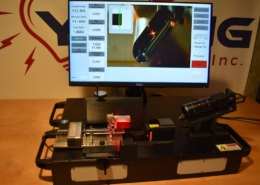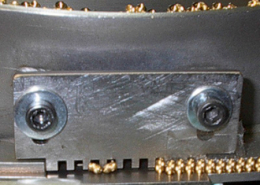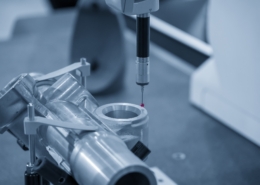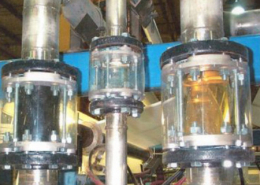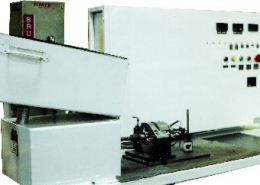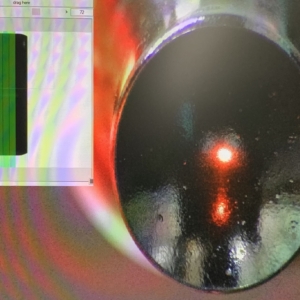Machine Vision Mentors
DESIGNED BY: Young Solutions Inc.

Mastering Machine Vision: The 10,000-Hour Journey to Expertise
In the world of technology, machine vision stands out as a transformative force, bringing automation and precision to various industries. Yet, becoming an expert in machine vision is not an overnight process—it requires dedication, practice, and a deep understanding of both hardware and software. As Malcolm Gladwell famously theorized in his book “Outliers,” reaching the level of expertise in any field typically demands around 10,000 hours of deliberate practice. The same applies to machine vision, where mastery involves a blend of theoretical knowledge, practical application, and continuous learning.
The Journey to Expertise
To truly become proficient in machine vision, one must invest time in learning and hands-on experience. This journey encompasses understanding the intricacies of image processing, computer vision algorithms, hardware integration, and real-world application challenges. Here’s a glimpse of what the 10,000-hour journey might entail:
1. Foundational Knowledge:
o Basic Concepts: Learn the fundamentals of optics, cameras, lighting, and image acquisition.
o Programming Skills: Develop proficiency in programming languages.
2. Advanced Techniques:
o Image Processing: Study techniques for filtering, edge detection, and segmentation.
o Machine Learning: Explore machine learning and deep learning methods for object detection, recognition, and classification.
3. Practical Application:
o Project Experience: Engage in numerous projects to apply theoretical knowledge to real-world problems.
o Hardware Integration: Gain experience in integrating cameras, lighting systems, and computational hardware.
4. Continuous Learning:
o Stay Updated: Keep up with the latest research, industry trends, and technological advancements.
o Network and Collaborate: Join professional groups, attend conferences, and collaborate with peers and mentors.
Checklist for Successful Machine Vision Integration
Achieving success in machine vision projects requires meticulous planning and evaluation. Here’s a comprehensive checklist to ensure a smooth integration:
1. Define Objectives:
o Clear Goals: Determine the specific problems you want to solve with machine vision.
o Measurable Outcomes: Establish key performance indicators (KPIs) to measure success.
2. Feasibility Study:
o Technical Assessment: Evaluate the technical feasibility of the project.
o Cost-Benefit Analysis: Analyze the potential return on investment (ROI).
3. Hardware Selection:
o Camera and Hardware Manufacturer Selection: Select the correct system for your project and your organization. A mentor can take you through this process as it relates to not only the project at hand, but also the best manufacturer for your processes to provide a common platform from which to build.
o Cameras: Choose the appropriate type of cameras (e.g., CCD, CMOS) based on resolution and speed requirements.
o Lighting: Select suitable lighting solutions to enhance image quality and consistency.
o Computing Power: Ensure you have the necessary computational resources for image processing.
4. Software Development:
o Algorithm Design: Develop and test image processing and machine learning algorithms.
o User Interface: Create an intuitive user interface for monitoring and control.
5. Testing and Validation:
o Prototype Testing: Build and test a prototype to validate the design.
o Performance Evaluation: Assess the system’s accuracy, speed, and reliability.
6. Integration and Deployment:
o System Integration: Integrate the machine vision system with existing workflows and machinery.
o Training: Train operators and technicians on the new system.
7. Maintenance and Support:
o Regular Maintenance: Schedule routine maintenance to ensure system longevity.
o Technical Support: Provide ongoing technical support and troubleshooting.
8. Continuous Improvement:
o Feedback Loop: Collect feedback and data to continuously improve the system.
o Upgrade Plan: Plan for future upgrades and scalability.
Embarking on the journey to mastering machine vision may require considerable time and effort, but the rewards are well worth it. By following this checklist and leveraging the guidance of a mentor, you can ensure a successful integration and harness the full potential of machine vision technology.
What if you need to implement a solution before you can invest 10,000 hours?
1. Look for companies that have expertise with remote integration and support.
2. Look toward local companies that can integrate a proper solution for your organization.
3. Leverage a Mentor for Success.
Young Solutions, Inc. provides all of the above services
Mentoring
One of the most effective ways to accelerate your learning curve in machine vision is by working with a mentor. A mentor can provide guidance, share valuable insights, and help you navigate the complexities of machine vision projects. Here’s how a mentor can make a significant difference:
1. Guidance and Direction:
o Focused Learning: A mentor can help you identify the most important areas to focus on, saving you time and effort.
o Setting Goals: With a mentor’s help, you can set realistic and achievable goals for your learning journey.
2. Practical Experience:
o Hands-On Training: A mentor can provide practical training and real-world examples, which are crucial for understanding complex concepts.
o Project Oversight: Having a mentor review your projects and provide feedback can help you avoid common pitfalls and improve your skills more rapidly.
3. Resource Access:
o Learning Materials: Mentors often have access to high-quality learning materials and resources that you might not easily find on your own.
o Professional Network: A mentor’s network can open doors to new opportunities, collaborations, and industry insights.
4. Motivation and Support:
o Encouragement: Learning machine vision can be challenging, and a mentor can provide the encouragement and support you need to stay motivated.
o Problem-Solving: When you encounter obstacles, a mentor can offer advice and solutions based on their experience.
How will a Mentor assist you?
1. Project Planning
• Define Objectives: Clearly outline what you want to achieve with the machine vision system.
• Scope of Work: Determine the scope of the project, including the specific tasks the system will perform.
• Budget: Establish a budget for the project, including hardware, software, and maintenance costs.
2. System Design
• Application Analysis: Analyze the application to identify potential obstacles to reliability and repeatability.
• Lighting Design: Ensure proper lighting for optimal image capture. Consider the type of lighting (LED, fluorescent, etc.) and its placement.
• Camera Selection: Choose the right camera based on resolution, frame rate, and sensitivity.
• Lens Selection: Select appropriate lenses to achieve the desired field of view and focus2.
• Software Selection: Choose the right software for image processing and analysis.
3. Hardware Setup
• Mounting: Securely mount the camera and lighting equipment.
• Cabling: Ensure proper cabling and connections between the camera, lighting, and computer.
• Power Supply: Provide a stable power supply for all components.
4. Software Configuration
• Calibration: Calibrate the system to ensure accurate measurements.
• Parameter Adjustment: Adjust parameters such as gain, exposure, and threshold settings.
• Testing: Test the system on a statistically significant sample set to ensure reliability and repeatability.
5. Integration
• Communication: Optimize communication between the machine vision system and other automation equipment.
• Automated Inspection: Design the system for automated inspection, customizing it for specific application needs.
• User Interface: Develop a user-friendly interface for monitoring and controlling the system.
6. Validation and Maintenance
• Validation: Validate the system to ensure it meets the project objectives.
• Training: Train operators and maintenance personnel on the proper use and upkeep of the system.
• Maintenance Plan: Establish a maintenance plan to ensure the system continues to operate effectively.
7. Documentation
• Documentation: Maintain detailed documentation of the system setup, configuration, and maintenance procedures.






